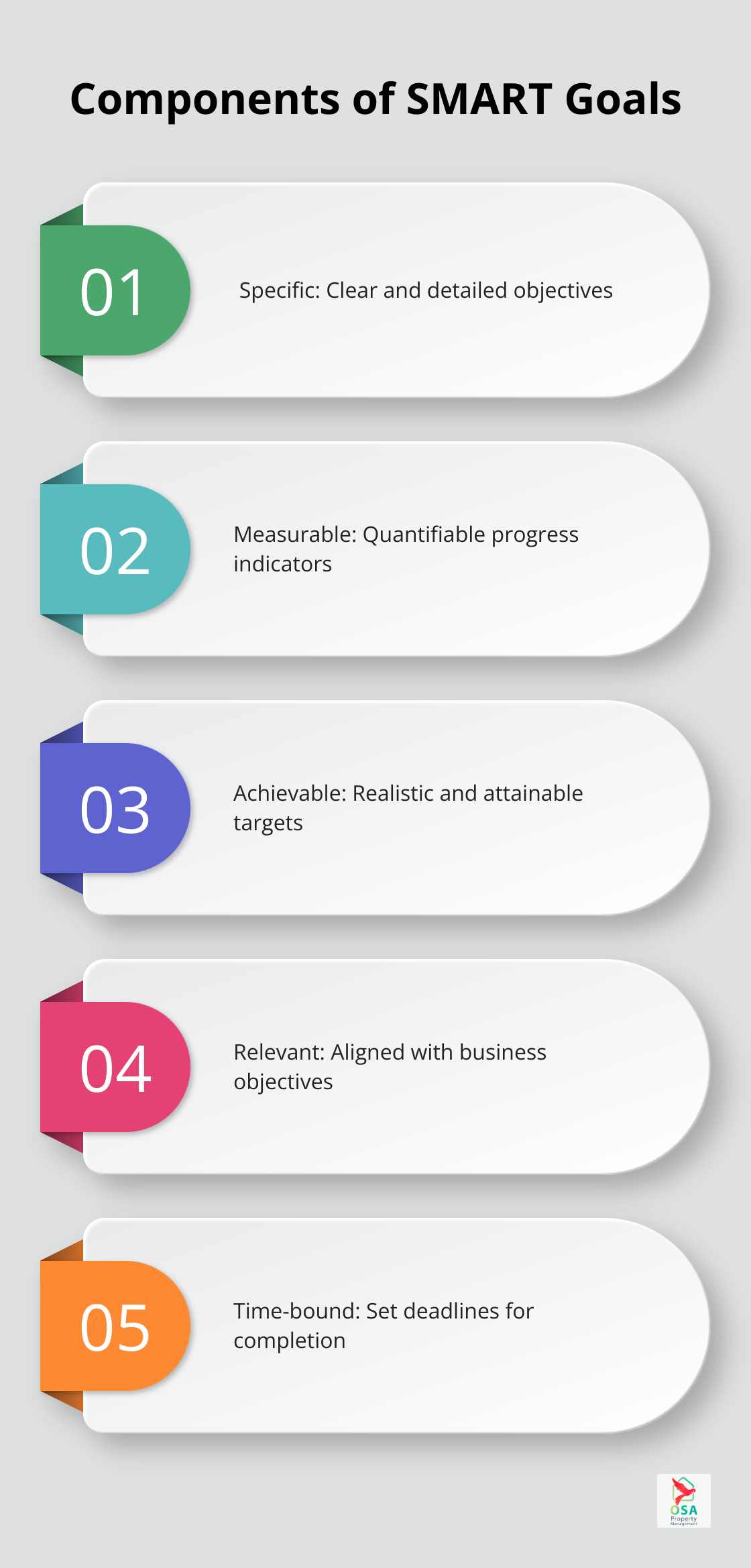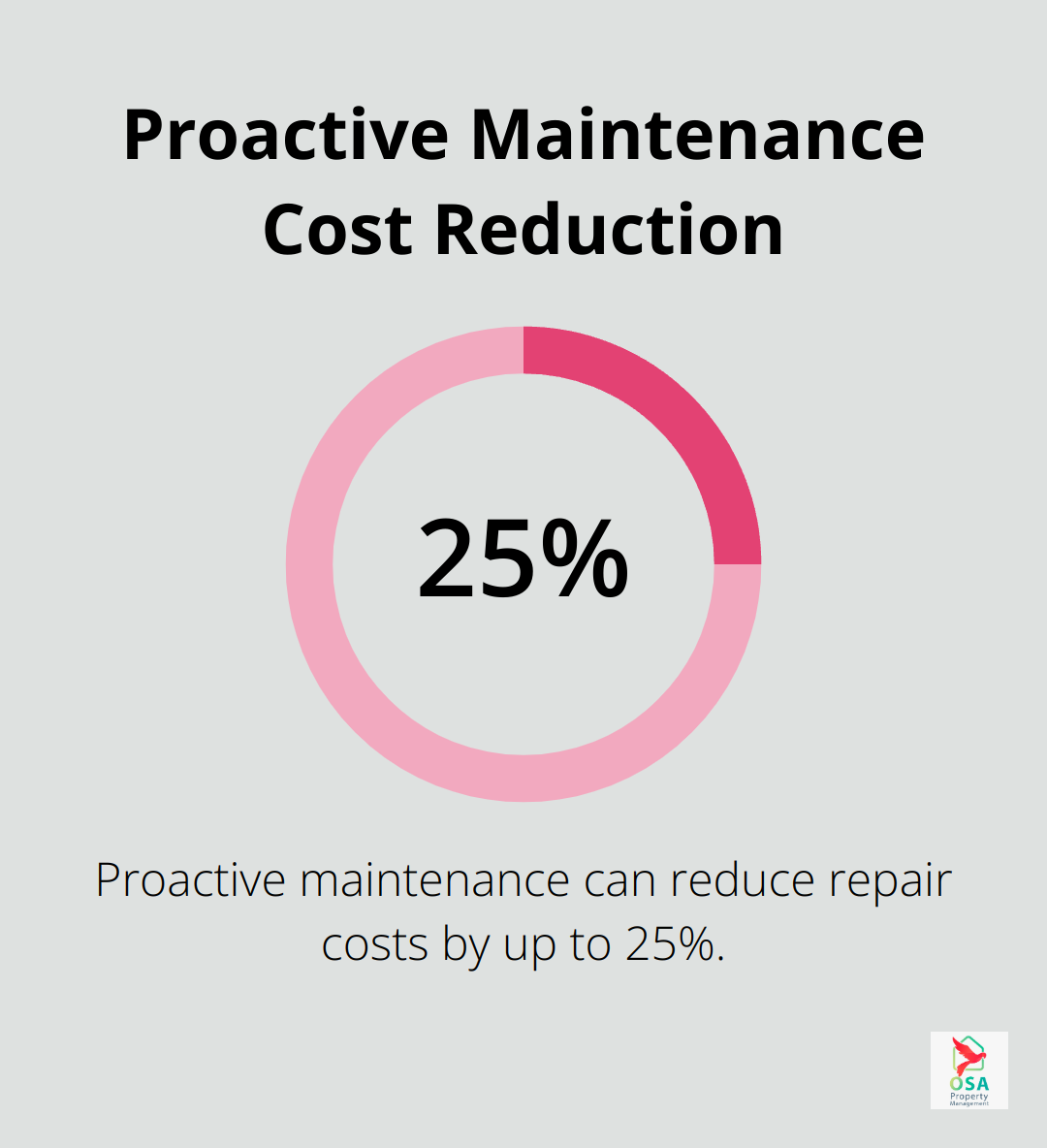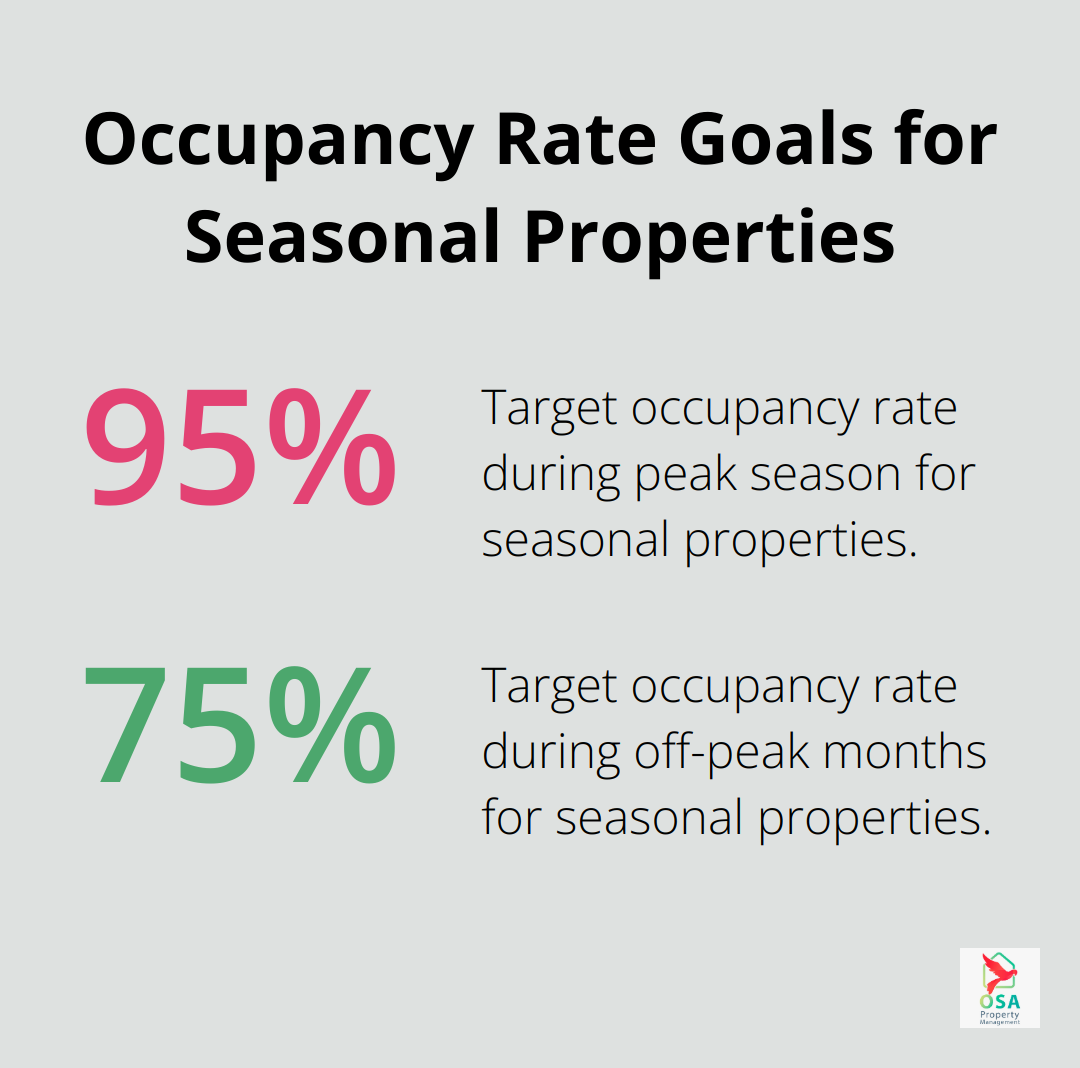At Osa Property Management, we know that setting clear objectives is essential for success in property management. SMART goals provide a structured approach to goal-setting that can significantly improve your performance and results.
In this post, we’ll explore SMART goals for property managers, including practical examples to help you implement this strategy effectively. By the end, you’ll have the tools to create targeted, achievable goals that drive your property management business forward.
What Are SMART Goals in Property Management?
Specific Goals Drive Results
At Osa Property Management, we’ve discovered that SMART goals transform property management. SMART stands for Specific, Measurable, Achievable, Relevant, and Time-bound. This framework turns vague ideas into actionable plans.

Specificity is essential. Don’t just aim to “improve occupancy rates.” Set a goal to “increase occupancy rates from 85% to 95% in our beachfront properties in Jaco.” This detail provides clear direction.
Measurable Objectives Track Progress
Measurable goals allow progress tracking. For example, “reduce maintenance response time from 48 hours to 24 hours” gives a clear metric to monitor. This helps you stay on track and make data-driven decisions.
Achievable Targets Motivate Teams
Setting achievable goals is vital. While ambitious targets can motivate, unrealistic ones can demoralize your team. Consider your resources, market conditions, and past performance when setting targets.
Relevant Goals Align with Business Objectives
Your goals should align with your overall business strategy. If you focus on luxury rentals in Manuel Antonio, a goal to “increase budget-friendly listings by 50%” might not fit. Instead, try to “enhance amenities in 30% of our luxury properties to justify a 10% price increase.”
Time-bound Objectives Create Urgency
Setting deadlines creates urgency and helps prioritize tasks. For instance, “implement a new property management software by Q2 2024″ gives your team a clear timeline.
SMART goals significantly improve performance. Goal-setting isn’t static. Regular review and adjustment of your SMART goals ensure they remain aligned with your evolving business needs and market conditions. This dynamic approach to goal-setting sets the stage for our next chapter, where we’ll explore key areas for property management goal-setting.
Key Areas for Effective Property Management
Maximizing Occupancy and Retention
Property managers must focus on occupancy rates and tenant retention as key performance indicators. A high occupancy rate typically signifies robust demand, enabling owners to implement strategies that can positively influence their property’s outlook. To achieve this, implement a targeted marketing strategy that showcases your property’s unique features. For beachfront properties in Jaco, highlight the stunning ocean views and proximity to local attractions.
Tenant retention is equally important. Turnover costs can include lost rent and expenses related to marketing the unit, screening potential residents, and cleaning and repairing the property. Try to improve your retention rate by 10% over the next year. This could involve the implementation of a tenant loyalty program or offering incentives for lease renewals.
Streamlining Maintenance Processes
Efficient maintenance is essential for tenant satisfaction and property value preservation. A study by the Building Owners and Managers Association (BOMA) found that proactive maintenance can reduce repair costs by up to 25%. Implement a preventive maintenance schedule for all your properties within the next six months. This could include regular HVAC inspections, roof checks, and pest control treatments.

Another important aspect is response time. Try to reduce your average maintenance response time from 48 hours to 24 hours. This can significantly improve tenant satisfaction and reduce the likelihood of small issues escalating into major problems.
Optimizing Financial Performance
Financial performance is the backbone of successful property management. Increase your Net Operating Income (NOI) by 8% in the coming year. This could involve a combination of strategies, such as reducing operational costs and increasing rental income.
For cost reduction, decrease energy consumption by 15% across your properties. This could involve the installation of energy-efficient appliances or implementation of smart home technologies. On the revenue side, increase rental rates by 5% while maintaining occupancy levels. This requires a delicate balance and should be based on thorough market analysis.
Enhancing Customer Satisfaction
Customer satisfaction directly impacts retention rates and your property’s reputation. The Institute of Real Estate Management (IREM) suggests that properties with high tenant satisfaction scores often see a 3-5% increase in rental income. Improve your overall tenant satisfaction score from 3.5 to 4.5 out of 5 within the next 12 months.
To achieve this, focus on improving communication channels. Implement a system where all tenant inquiries are responded to within 4 hours during business hours. Consider the setup of a tenant portal for easy communication and issue reporting. Regular surveys can help you track progress and identify areas for improvement.
These key areas form the foundation of a comprehensive property management strategy. In the next section, we’ll explore how to implement SMART goals effectively within each of these areas to drive your property management business forward.
How to Implement SMART Goals in Property Management
Create Specific and Measurable Objectives
Property managers should define clear, specific objectives for each area of their business. Instead of a vague goal like “improve tenant satisfaction,” try something more concrete, such as prioritizing regular maintenance to drive tenant satisfaction.
To make goals measurable, identify key performance indicators (KPIs) that align with your objectives. For instance, if you focus on reducing maintenance costs, track metrics like the number of emergency repairs, average repair costs, and time to resolution.
Set Realistic and Achievable Targets
While ambition drives success, unrealistic goals can lead to frustration and demotivation. Analyze your historical data, market conditions, and available resources to set achievable targets. For example, if your current occupancy rate is 85%, try to increase occupancy to 90% within three months, then reassess and adjust as needed.
Consider external factors that might impact your goals. For instance, if you manage properties in a seasonal tourist destination, your occupancy rate goals should reflect these fluctuations. You might try for 95% occupancy during peak season and 75% during off-peak months.

Establish Time-Bound Goals
Every SMART goal needs a deadline. This creates a sense of urgency and helps prioritize tasks. For example, set a goal to implement a new property management software system by the end of Q2 2024. Break this larger goal into smaller, time-bound milestones, such as “research and select software by end of month 1,” “complete staff training by end of month 2,” and “fully integrate the system by end of month 3.”
Time-bound goals also allow for regular check-ins and progress assessments. Schedule monthly review meetings to evaluate your progress and make necessary adjustments. This approach ensures that you stay on track and can respond quickly to any challenges or opportunities that arise.
Adapt and Refine Your Goals
The property management landscape changes constantly. What works today might not be as effective tomorrow. Reassess your goals regularly to ensure they remain relevant and aligned with your overall business strategy. This flexibility allows you to adapt to market shifts, new technologies, and changing tenant preferences.
Final Thoughts
SMART goals transform property management operations. We at Osa Property Management have witnessed the positive impact of structured goal-setting across Costa Rica. Our experience shows that well-defined objectives lead to better outcomes for property owners and tenants alike.
Smart goals for property managers examples include increasing occupancy rates by 5% in the next quarter or reducing maintenance response times to under 24 hours. These targeted, measurable objectives provide clear direction and motivation for your team. The implementation of SMART goals fosters a culture of continuous improvement and accountability within your organization.
Property managers who adopt SMART goals position themselves for success in the competitive real estate market. Try to start small and build momentum by focusing on a few critical areas of your operations. As you see results, expand your goal-setting to encompass more aspects of your business (and watch your property management performance soar).

